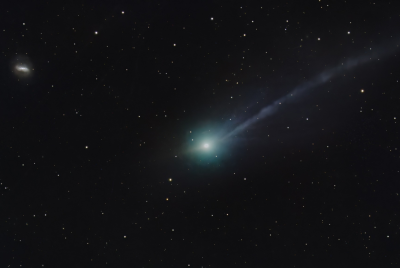Goblin Shark Facts as Second Ever Specimen Caught in Gulf of Mexico
Second Ever Specimen Caught in Gulf of Mexico

An extremely rare goblin shark has been caught by shrimp fishermen in the Gulf of Mexico, emerging from around two kilometres beneath the ocean surface.
The 15ft goblin shark, caught by fisherman Carl Moore, is believed to be the second only specimen to be caught in the Gulf of Mexico.
It is so rare that the last time one was spotted in the Gulf of Mexico, a scientific paper was written about it, the Houston Chronicle reports.
So it's definitely a goblin #shark pic.twitter.com/IAfCYykdpL
— David Shiffman (@WhySharksMatter) May 1, 2014"I didn't even know what it was," Moore said. "I didn't get the tape measure out because that thing's got some wicked teeth, they could do some damage."
The crew took photos of their unusual catch then put the prehistoric creature back into the water.
The goblin shark was netted on 19 April and Moore reported the find to the National Oceanic and Atmospheric Administration, where scientists were keen to find out more.
And it's definitely really big. pic.twitter.com/BZjx8431Rp
— David Shiffman (@WhySharksMatter) May 1, 2014John Carlson, a shark expert at NOAA, said: "This is only the second confirmed sighting in the Gulf, the majority of specimens are found off Japan or in the Indian Ocean and around South Africa."
To mark the rare find, IBTimes UK looks at some of the key facts about goblin sharks:
They look a bit like Ridley Scott's Aliens
The appearance of goblin sharks has earned them the nickname "living fossil". They have a long snout that hides a mouth of needle-like teeth. Their skin is pinkish-red in colour while out of water, but researchers believe in the deep ocean the colour it would appear black, making it virtually impossible to see – ideal for hunting.
They have electrical sensors in their snouts
Of the little information available about goblin sharks, scientists believe their long snouts contain electrical sensors so they can find prey in the dark. When a fish or some other unlucky morsel is caught in its sights, the goblin shark's jaw snaps out like a venus fly trap.
They live in the deepest parts of the ocean
One of the reasons goblin shark sightings are so rare is because they live in some of the deepest parts of the ocean. Speaking to National Geographic, Carlson said that the latest specimen was swimming in the shallower end of its average depth – they are normally found between 300 and 1,300m . This means goblin sharks are among the deepest occurring shark species in the world.
The goblin shark caught was probably female
At first, Moore estimated the goblin shark to be 18ft but analysis by the NOAA determined it was closer to 15. Scientists also guessed it was probably a female, as male specimens have external sexual characteristics known as claspers that they use to hold females while mating. Claspers are fin-like appendages near the tail: "From the photographs, we don't see those, so we're suspecting it's a female," Carlson said.
They live all around the world
Goblin sharks have been found in Brazil, French Guiana, Colombia, and the Indo-Pacific ocean, but they are most commonly seen off the waters of Japan. One was also spotted in the North Atlantic off the coast of the Bahamas. It is not known if they are more numerous around Japan, or if increased sightings has led to this perception.
They are a mystery
While researchers know the goblin shark is from the family Mitsukurinidae from 125 million years ago, very little concrete information is known of them. "We don't know how long they live; we don't know how often they reproduce, or even how big they are when they reproduce," Carlson says. "They're a mystery."
© Copyright IBTimes 2025. All rights reserved.






















